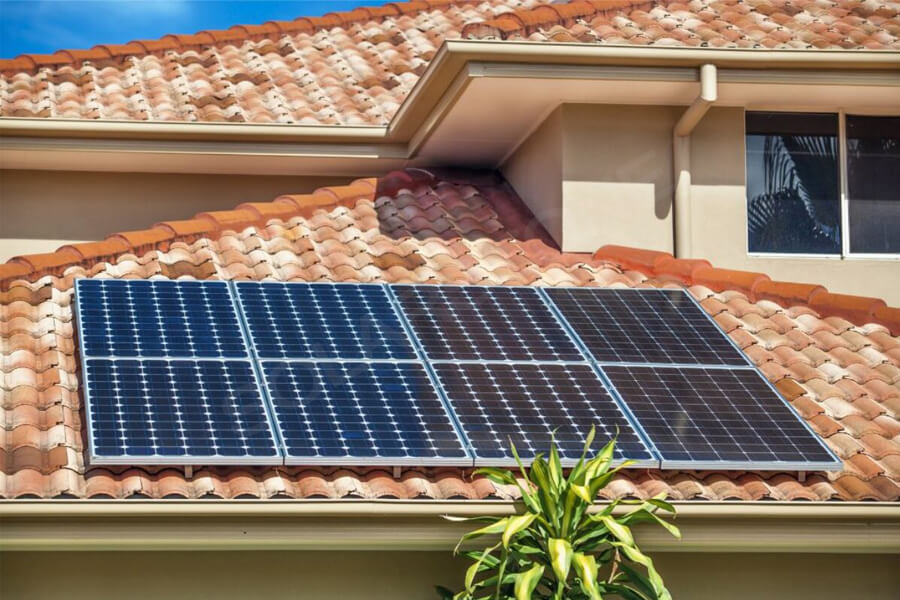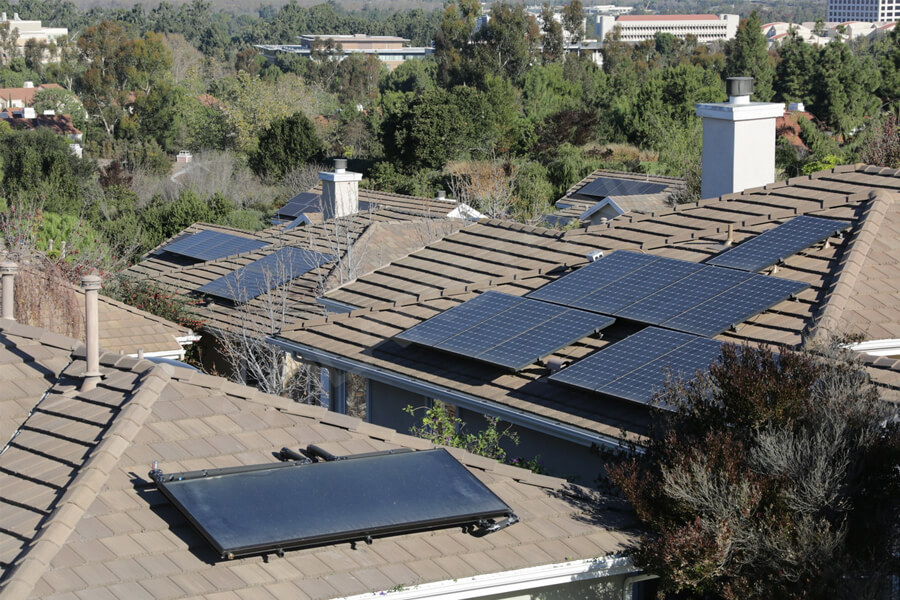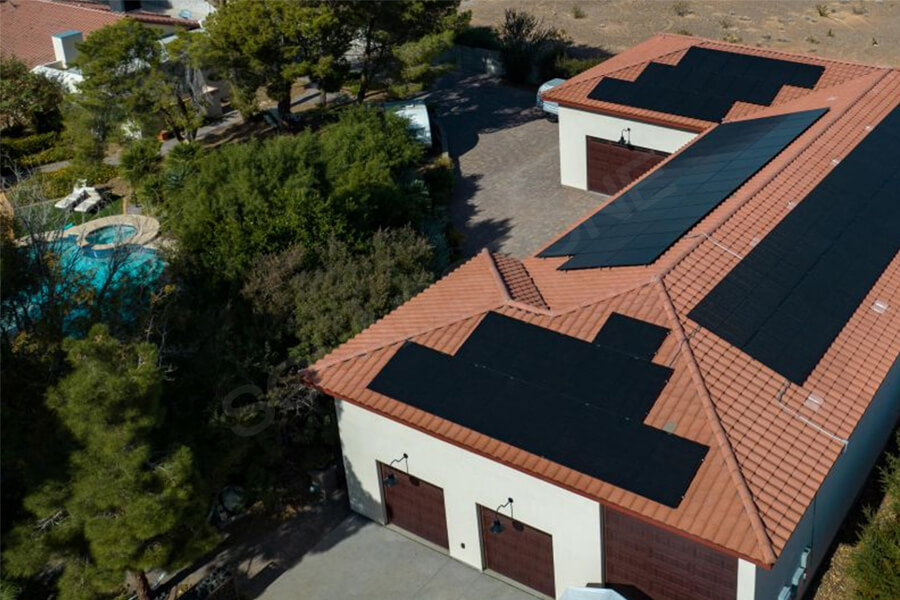Selection of schemes for household solar photovoltaic power generation systems
(1) System without energy storage device
The system supplies power during the sunshine period, and the excess electricity is connected to the grid and sold to the public grid; When there is insufficient sunlight, power is supplied from the public grid.
Advantages: Reduce system investment costs.
Applicable regions: Regions with long annual average sunshine time and high daily radiation.
(2) System with energy storage device
During the sunshine period, electricity is generated to supply the load, and the excess electricity is stored in the energy storage device. After the energy storage device is fully charged, the remaining electricity is connected to the grid.
When photovoltaic power generation is insufficient, it is supplied by the public grid.
Applicable regions: Areas with short annual average sunshine time and low daily radiation.
Independent solar photovoltaic power generation systems or photovoltaic backup power complementary systems can be used.
(3) Special instructions
Regions with an average annual sunshine time greater than 4.93 hours can adopt independent solar photovoltaic power generation systems.
Due to the public power grid situation, it is recommended to adopt an independent photovoltaic backup complementary photovoltaic power generation system for unit residential buildings.
Due to the ease of renovation, villa buildings can adopt a photovoltaic power generation grid connected system with energy storage devices.
Selection of Main Equipment for Solar Photovoltaic Power Generation Systems
01 Composition of Photovoltaic Panel Components
Main components: including photovoltaic cells, brackets, bypass diodes, and corresponding pipelines.
Monocrystalline silicon: High photoelectric conversion efficiency, suitable for areas with insufficient sunlight.
Polycrystalline silicon: The production process is simple, the cost is low, and it is suitable for areas with sufficient sunlight.
Amorphous silicon (flexible film): With low conversion efficiency, it absorbs a wide range of sunlight wavelengths and is suitable for low light environments. It can be flexibly installed on building exterior walls, roofs, etc.
The function of the bracket is to firmly support the solar panel, ensuring a secure connection and easy replacement.
02 Selection of battery pack
Type: ordinary lead-acid, sealed maintenance free lead-acid, colloidal battery, nickel hydrogen battery, etc.
Recommended choice: Deep cycle sealed maintenance free lead-acid batteries, considering performance and cost.
03 Selection of controllers
Function: Control the photovoltaic panel to charge the battery and supply power to the load, maintaining the optimal power generation state of the system.
Type: Independent or integrated (combined with inverter), with automatic switching function for backup power supply.
Protection functions: Short circuit, polarity reversal, internal short circuit, lightning protection to prevent reverse discharge of the battery.
04 Selection of inverters
Function: Convert direct current into alternating current.
Recommended choice: an inverter that outputs pure sine waves.
05 Backup power converter
Function: In case of insufficient photovoltaic power generation, it automatically switches to backup power sources (such as mains power, wind power, etc.) to ensure continuous power supply.







